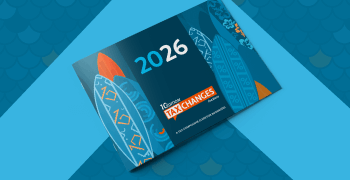
What are preferential treaties and why are they worth looking into?
Given the state of the global economy and potential renewed interest in U.S.-EU trade agreement negotiations, now seems a good time for U.S. businesses to review the pros and cons of preferential treaties.
What is a preferential treaty?
Commonly referred to as a free trade agreement (FTA), a preferential treaty is an agreement between two or more countries that establishes advantageous trading practices for certain goods or services originating from participating countries. Preferential treaties also typically include protections for intellectual property rights and investors.
FTAs offer privileges above and beyond those enjoyed by the World Trade Organization’s most-favored-nation (MFN) status, which all 164 members of the World Trade Organization (WTO) have. The WTO defines most-favored-nation status as “the principle of treating trading partners equally”: If one country grants “more favorable treatment” to another country, “it must immediately and unconditionally give the same treatment to imports from all signatories” of the treaty. Duty rates obtained through an FTA can be even lower than those offered by MFN status.
According to the International Trade Administration, the U.S. engages in trade agreements primarily “to reduce barriers to U.S. exports, protect U.S. interests competing abroad, and enhance the rule of law” in the FTA partner countries.
Though treaties are between countries, they can benefit businesses that opt to take advantage of them. For the most part, the benefits don’t come automatically: Businesses must apply for treaty status.
Why should you apply for treaty status?
The biggest benefit FTAs provide to a company is the preferential tariff treatment — the ability to move certain products into or out of partner countries with reduced or zero tariffs (aka, duties).
Every treaty has Preferential Rules of Origin (ROOs) that determine whether “products are eligible for duty-free or reduced duties under U.S. trade preference programs.” Not all products qualify for preferential treatment. For example, reduced rates apply only to products that originate (i.e., products that are made “or substantially transformed”) in the U.S. or FTA partner territory:
For U.S.-based exporters, the goods must originate in the U.S.
For U.S.-based importers, the goods must originate in a partner country
The International Trade Administration’s Rules of Origin — Substantial Transformation offers more details.
Furthermore, different treaties reduce or eliminate tariff rates for different products. Businesses that trade in qualifying products will benefit most from claiming preferential treatment.
What is a certificate of origin?
To ensure qualifying shipments are assigned the preferential tariff rate, a certificate of origin should be obtained and included with the shipment. Without one, the standard tariff could be applied at customs.
Some FTAs require a specific form, such as this one for the Korea-Canada Free Trade Agreement. Others will accept declarative statements containing “specific data elements including information stating how the product qualifies for an FTA,” such as:
Date of certification
HS code (see section below) and a description of the product
Information demonstrating the origin of the good (see FTA Rules of Origin)
Name and contact information of the certifying person
Period the certification covers (not to exceed 365 days)
Even if not required by an agreement, it’s within the rights of importers to ask exporters to use a specific format. Additional information can be found on the International Trade Administration website.
Are there downsides to applying for treaty status?
Although obtaining treaty status can benefit a company’s bottom line because of the lower duties, some businesses may choose not to seek treaty status because of broader economic, environmental, humanitarian, or political concerns.
If you follow world news, you know free trade agreements often spark protests. In 2016, tens of thousands people across Europe protested proposed agreements with the U.S. and Canada over concerns they would “undermine democracy and lower food safety, environmental and labor standards.” Many Americans criticized the now-defunct North American Free Trade Agreement (NAFTA) for jeopardizing jobs, threatening economic growth, and increasing the cost of certain goods, while Mexican protesters said NAFTA “devastated Mexican farms.”
Which countries have preferential treaties with the US?
The U.S. currently has 14 preferential treaties with 20 countries:
Australia: The Australia Free Trade Agreement
Bahrain: The Bahrain Free Trade Agreement
Canada: The United States-Mexico-Canada Agreement (USMCA)
Chile: The Chile Free Trade Agreement
Colombia: The United States-Colombia Trade Promotion Agreement
Costa Rica: The Dominican Republic-Central America FTA (CAFTA-DR)
Dominican Republic: The Dominican Republic-Central America FTA (CAFTA-DR)
El Salvador: The Dominican Republic-Central America FTA (CAFTA-DR)
Guatemala: The Dominican Republic-Central America FTA (CAFTA-DR)
Honduras: The Dominican Republic-Central America FTA (CAFTA-DR)
Israel: The Israel Free Trade Agreement
Jordan: The Jordan Free Trade Agreement
Korea: The U.S.-Korea Free Trade Agreement
Mexico: The United States-Mexico-Canada Agreement (USMCA)
Morocco: The Morocco Free Trade Agreement
Nicaragua: The Dominican Republic-Central America FTA (CAFTA-DR)
Oman: The Oman Free Trade Agreement
Panama: The United States-Panama Free Trade Promotion Agreement
Peru: The Peru Trade Promotion Agreement
Singapore: The Singapore Free Trade Agreement
Although the U.S. and the EU have overlapping networks of FTAs, they have no FTA with each other.
Any and all of the treaties listed above could benefit U.S. importers throughout the supply chain, from manufacturers to marketplaces and retailers.
What happens if/when treaties change?
Treaties can and do change: Penalty tariffs were announced, withdrawn, and reinstated under the Trump administration; NAFTA was dissolved and the USMCA created. But generally, it’s more common for rates within treaties to change than for treaties themselves to dissolve.
For tariff rates do go up and down, and businesses with treaty status need to stay on top of those changes. Adding preferential treaties to automated customs duty calculations ensures the most up-to-date rates are applied to every qualifying transaction.
How do HS codes fit in?
Every product shipped across an international border must be assigned a Harmonized System code (or HS code). The Harmonized System is a global product classification system, and HS codes are essentially a “universal economic language and code for goods.” They enable customs agents to quickly identify imports and exports as well as ensure they’re assigned the appropriate customs duty and import tax.
HS codes are essential to the import/export process because they’re linked to duty and tariff rates in each country. They also identify products that qualify for the preferential rates provided by treaties.
The World Customs Organization updates the Harmonized System every five years to account for new products and circumstances, and the latest update took effect January 1, 2022. The 2022 edition had about 350 amendments, including specific provisions related to the classification of electrical and electronic waste (e-waste), as well as new provisions for novel nicotine-based products and unmanned aerial vehicles (UAVs), more commonly known as drones. Many classifications for items with a low volume of trade were deleted or substituted.
Read Are HS codes your business' weak spot? to learn more about HS codes.
How can Avalara help businesses take advantage of preferential treaties?
Avalara AvaTax Cross-Border automatically calculates customs duties and import taxes at the point of sale, and Avalara Managed Tariff Code Classification automates item classification (i.e., identifies HS codes).
Avalara also supports the treaties listed above, so cross-border customers with treaty status can request to have the lower rates applied to qualifying transactions. When a transaction is identified as having treaty status, AvaTax will apply the appropriate preferential duty rate instead of the MFN rate.
This post was updated November 2, 2022; it originally published July 21, 2021.

Avalara Tax Changes 2026 is here
The 10th edition of our annual report engagingly breaks down key policies related to sales tax, tariffs, and VAT.
Stay up to date
Sign up for our free newsletter and stay up to date with the latest tax news.














